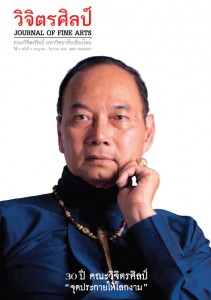กว่าจะเป็นหลักสีมาเขตวัดราชประดิษฐสถิตมหาสีมาราม
Main Article Content
Abstract
The Mahasima of Wat Rajapradit, Bangkok.
Sima in Pali, or Sema in Khmer, both mean the area in which a community of Buddhist monks reside. The boundary of the area is indicated or marked by any natural matters or features such as trees, brooks, ant hills or rocks etc. Thus, those man-made stone slabs surrounding the uposatha hall could be also categorized as sima boundary markers. Originally, the purpose of these markerswas to demarcate the area in which a particular community of monks reside, in order that they may perform their functions together simultaneously, thus creating harmony and unity. Mostimportantly, it was indicated that such said functions must be performed by every single monk within the community. But by hook or by crook, in order to get around the rule, monks later reduced their boundary markers to only a couple of meters surrounding the uposatha hall. So by this, not every monk has to attend the obliged functions, as they are outside the indicated boundary markers.
As for the uposatha hall, it could be a building, a hut, a shack or even a cave. But above all, the ‘hall’ must be selected together and agreed upon by the whole community of monks of the said boundary. Most important, there must be only one uposatha hall within a particular boundary.
This article is to show that King Rama IV, alias King Mongkut, has misunderstood the functions of the boundary of WatRajapradit, its markers and the purpose of the uposatha hall.


